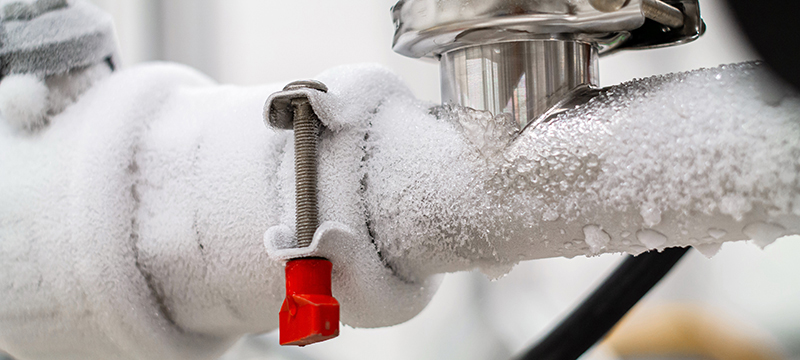Among the most common issues that homeowners face during winter is frozen pipes. If not resolved promptly and correctly, the ice in the plumbing may lead to substantial and costly damage. It is not hard to learn how to unfreeze pipes, especially if you have the right tools and equipment for the job. Doing the job yourself can save you from needing to pay for repairs. This article gives you the essential and practical tools to help you thaw frozen pipes effectively.
Pipe Insulation
Before we get to the tools for thawing frozen pipes, it is essential to note the importance of pipe insulation. Having it in place goes a long way in preventing frozen pipes. This inexpensive and easy-to-install material provides additional protection against the cold. By reducing heat loss, pipe insulation ensures that water remains at a suitable temperature, reducing the risk of freezing.
Heat Tape or Heating Cable

Heat tapes or heating cables do an excellent job of thawing frozen pipes. These products apply controlled heat to warm frozen pipes, allowing water to flow freely and gently. Heat tapes and cables wrap around the frozen pipe to warmly melt the ice. Following the manufacturer’s instructions is crucial to ensure safe and effective usage when using a heat tape or heating cable.
Heat Gun

Thawing frozen pipes with a heat gun can be an effective and quick solution to prevent damage from frozen pipes. To begin, ensure that the water supply to the pipe is turned off to avoid any accidents. Next, safely position the heat gun a few inches away from the frozen area of the pipe. Start on the lowest heat setting and gradually increase if necessary. Carefully move the heat gun back and forth along the frozen section to evenly distribute the heat.
As the ice melts, keep an eye on the pipe to ensure it does not overheat or cause any damage. Once the pipe is thawed, slowly turn on the water to check for leaks or bursts. Remember to prioritize safety, wear appropriate protective gear, and be cautious when handling electrical components. It is always best to contact a professional plumber to handle the situation if you are unsure or uncomfortable.
Hairdryer
If you don’t have a heat gun, a household hairdryer can be a quick and convenient tool for emergency pipe thawing, especially in hard-to-reach areas. Set the hairdryer to the highest heat setting and direct the stifling air towards the frozen section of the pipe. Move the hairdryer along the length of the pipe, focusing primarily on the frozen area until the ice melts. Remember to keep the hairdryer dry and away from water sources to avoid electrical shorts and injuries.
Space Heater

Use a space heater if you have enough space around the frozen pipes. Position the heater near the frozen section, ensuring that it is away from flammable materials, and set it on a stable surface to reduce risks to safety. Switch the space heater to a moderate setting and let the warm air flow around the pipe. Monitor the heater closely while it operates, and never leave it unattended.
Hot Water
In situations where the frozen pipe is not easily accessible or the abovementioned methods are not feasible, you can use hot water. Boil water and pour it carefully over the frozen section of the pipe. This introduces heat directly to the ice, slowly thawing it. Repeat until the water flows freely through the pipe.
- Take adequate precautions to avoid burns and scalds by wearing protective gear and carefully handling the boiling water.
Heat Lamp
A heat lamp is another valuable tool for thawing frozen pipes, particularly in enclosed spaces such as cabinets or small areas. Position the heat lamp near the frozen pipe, but ensure it is a safe distance away to prevent any damage. The heat from the light will gradually warm the frozen pipe, allowing the ice to melt. Use an appropriate wattage bulb for the heat lamp and avoid flammable materials.
Plumbing Snake or Cable Auger
If the frozen pipe is not responding to other thawing methods, use a plumbing snake or cable auger to remove any obstructions or ice buildup within the pipe. This provides an alternative way to thawing pipes without heat. Insert the snake or cable auger into the affected pipe and gradually rotate the handle, gently working it back and forth. The snake or cable auger will break up the ice, allowing water to flow freely again. Exercise caution while using this tool to avoid damaging the pipe.

As the methods above show, learning to defrost pipes is not as complicated as you think. Along with the right tools, you can prevent damage and restore water flow in your plumbing. Remember to install pipe insulation before the cold months to reduce the chances of frozen pipes significantly. Should the situation arise, make sure to have practical tools such as heat tapes or cables, hairdryers, space heaters, hot water, heat lamps, and plumbing snakes or cable augers to help you deal with the problem. Remember, safety should always be a priority when dealing with frozen pipes. If you are uncertain or uncomfortable with the thawing process, it is advisable to seek professional help.




